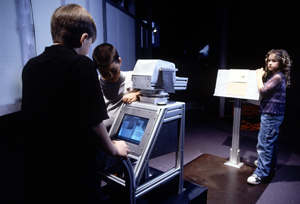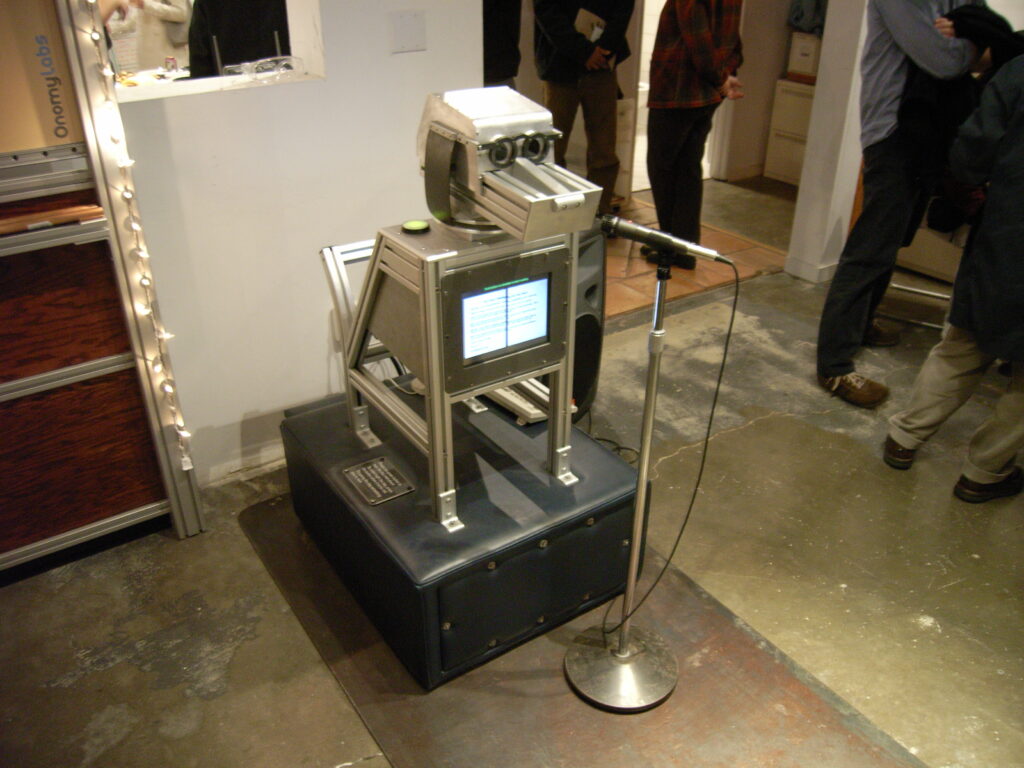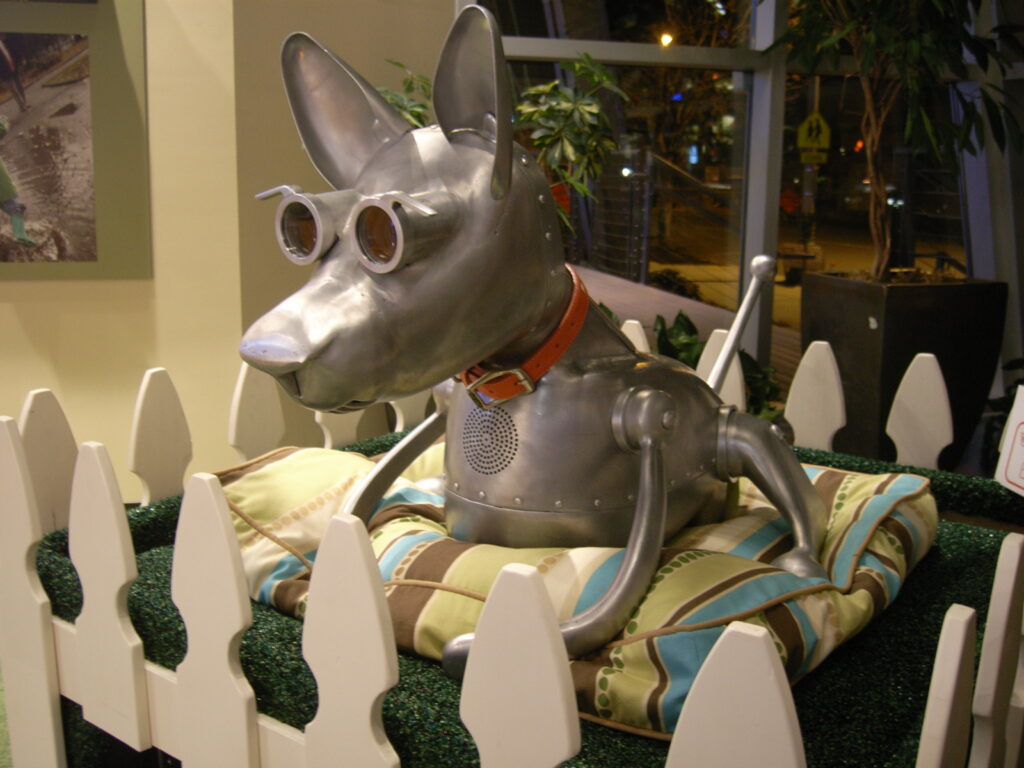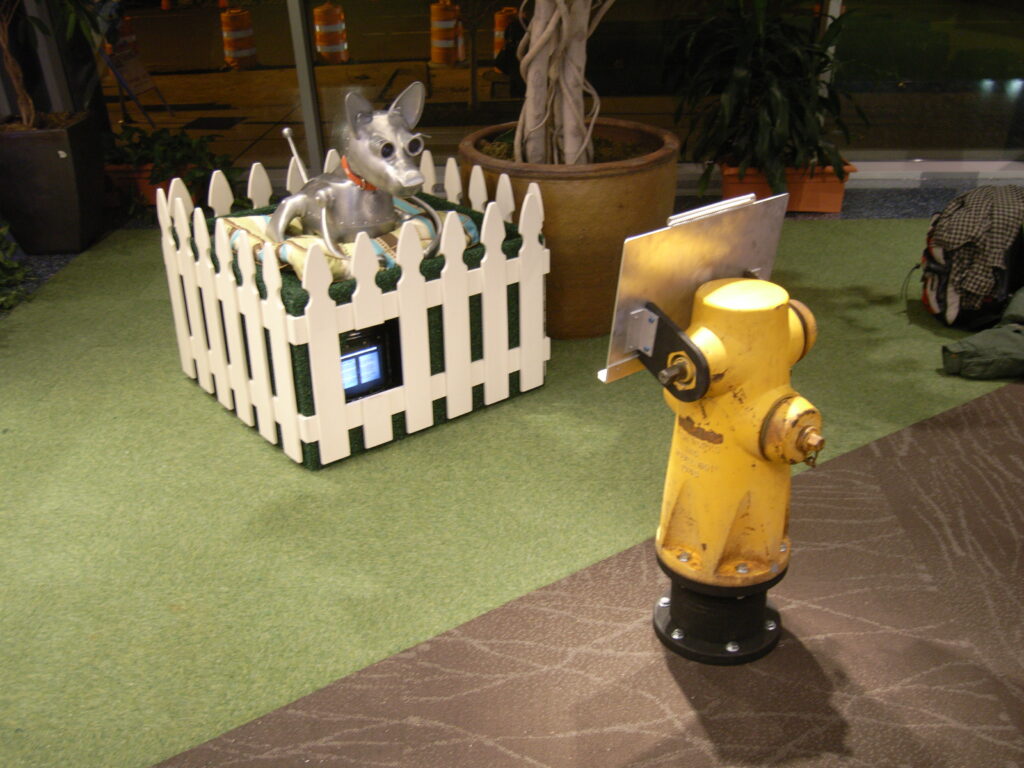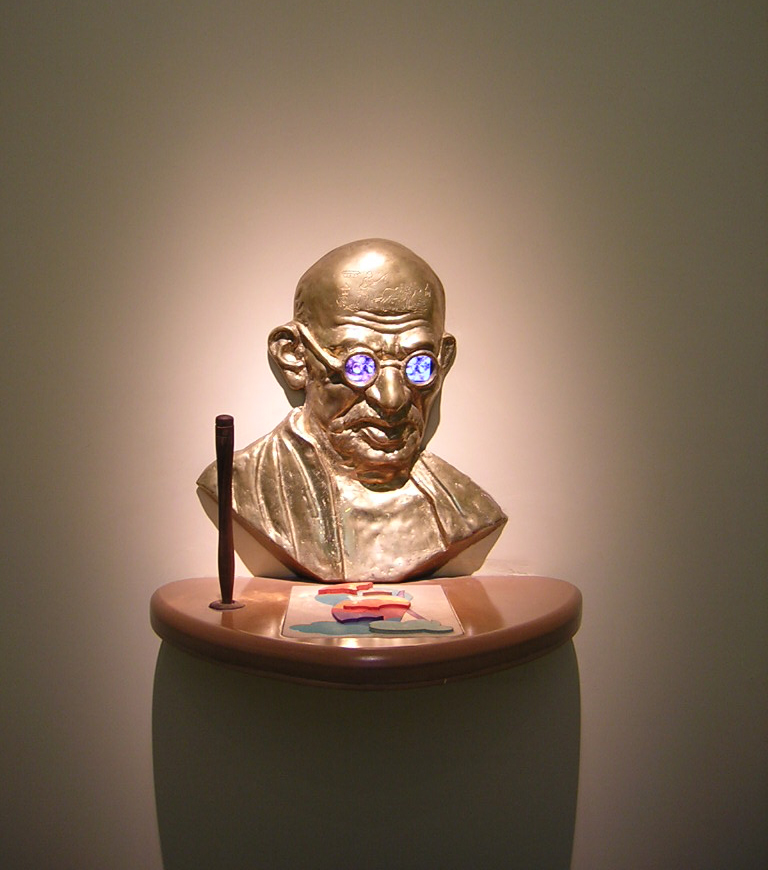The Reading Eye Dog was designed to demonstrate the state of maturity of “machine reading” technologies. As an exhibit, we were seeking something that would show how good machine reading had become, while encouraging the public to muse about what that phrase really meant. At the time that the project was done, Ray Kurzweil was selling a box with an integrated scanner and speech synthesizer that blind people could use to have printed material read to them. Not a very appealing form factor for a hands-on science museum floor.
Replace the scanner bed with video cameras, so the device can “see” text at a distance, and a flood of new exhibit forms are possible. One possibility is to make a humanoid robot. Unfortunately, Hollywood has set the bar *very* high for humanoid robots – C3PO knows 6000 languages and never makes an error. We could’ve made a humanoid robot that could read, but it would’ve been error-prone, because that’s the state these technologies are in.
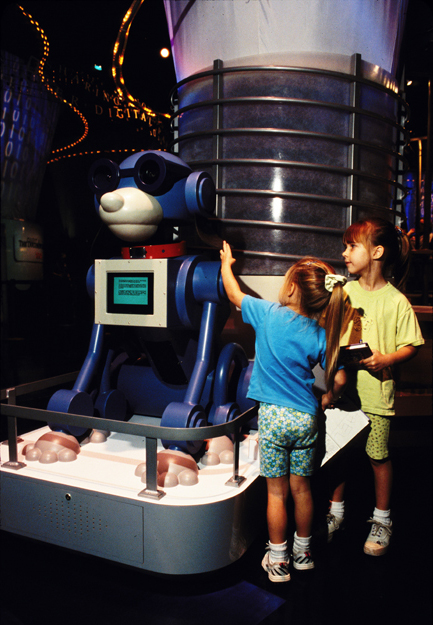
Colophon
C++
DecTalk
IBM Via Voice
C-Mount Video Cameras (FireWire then USB)
Enter the Reading-Eye Familiar, including sketches of a parrot that sits on your shoulder and points out salient text in your personal landscape. A Reading-Eye Dog, for instance, even if it makes occasional errors, is still the smartest dog in the world!
The Reading-Eye Dog has appeared in various guises over the years. The original is a square-jawed beast originally penned by Banny Banarjee – this was the popular mascot of a Xerox PARC museum show entitled eXperiments in the Future of Reading. Shortly thereafter, Disney designed a variant for Epcot, which had that Disney look, but was a little too big and flashy for kids – they were actually somewhat afraid of the looming canine. Another dog design came from Nemo Gould, made from recycled aluminum bits (vacuum parts, drill bodies, shoe trees, etc.) – this was last seen at the Discovery Center for the South Lake Union development in Seattle.
